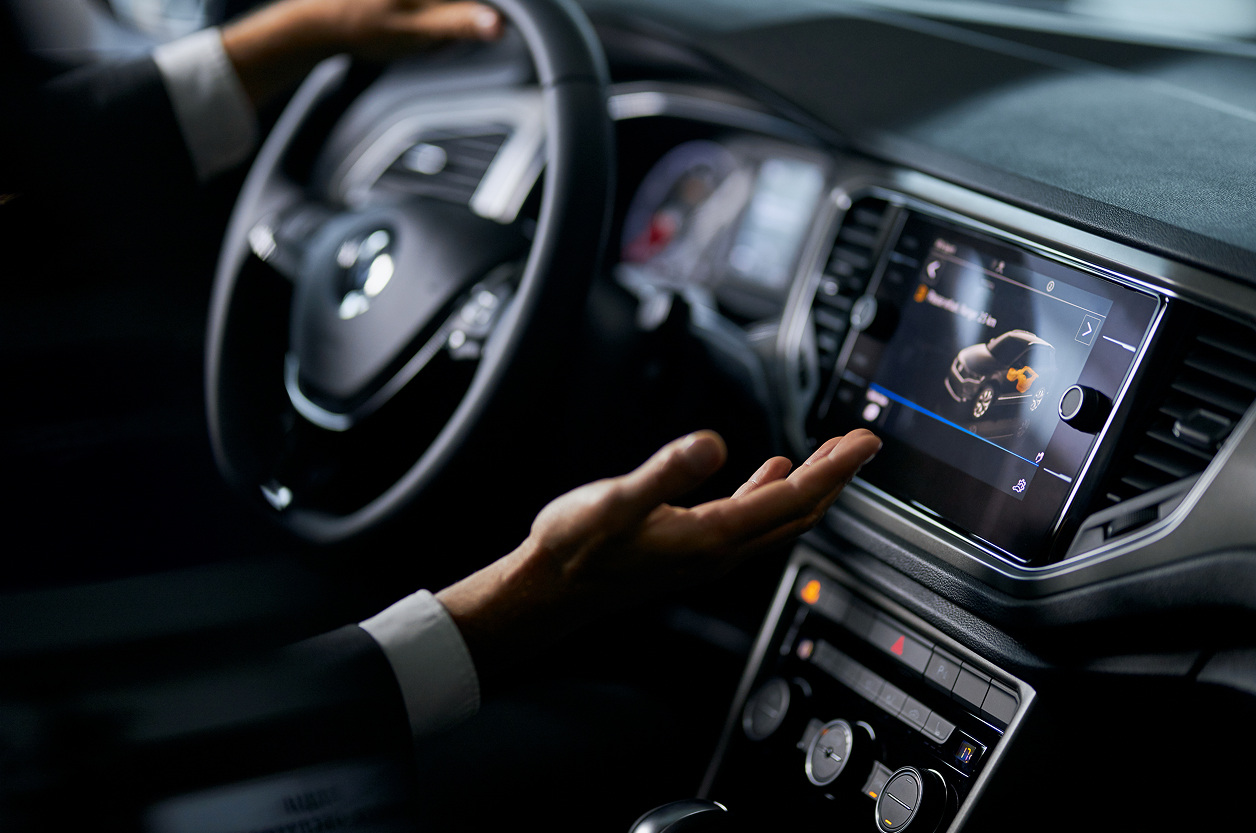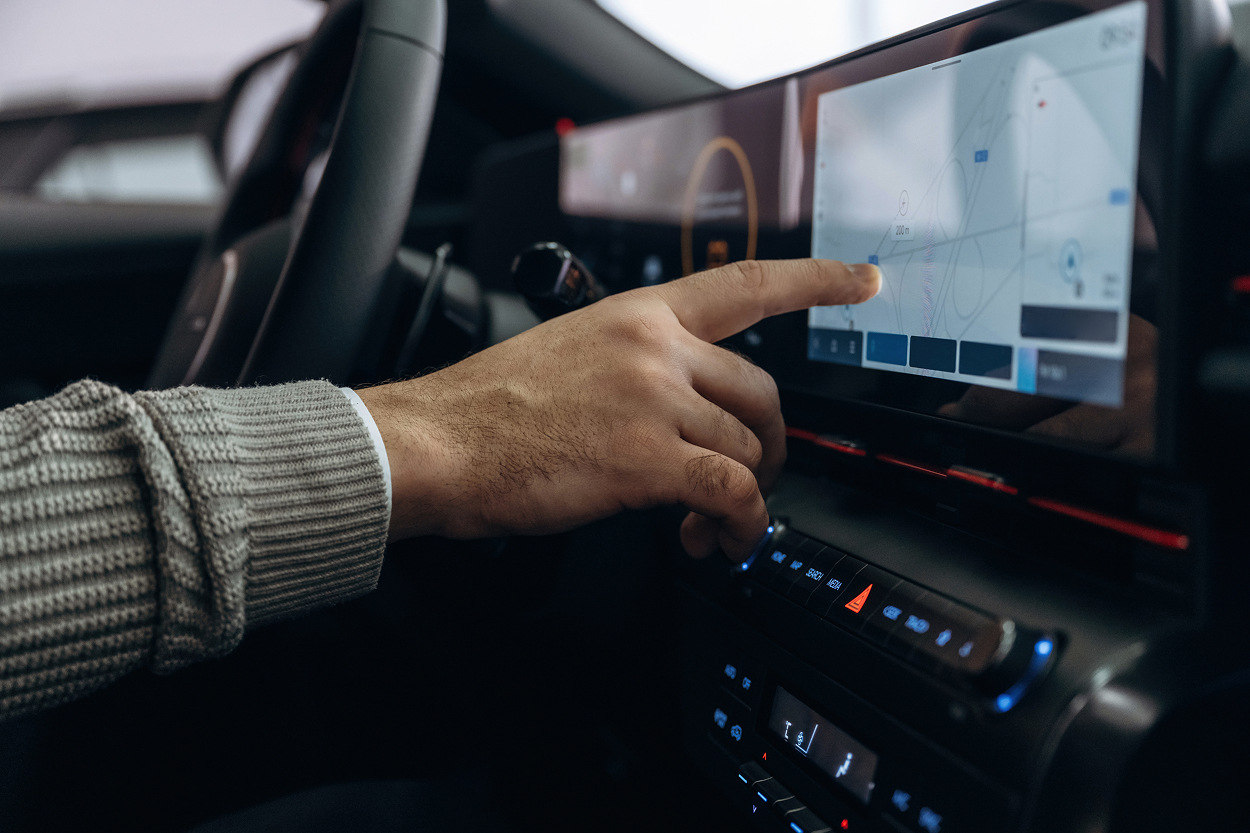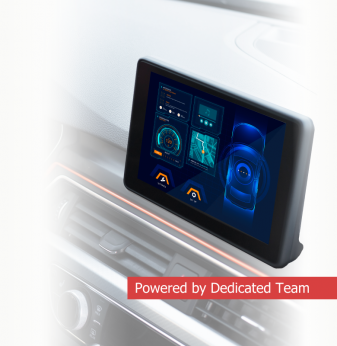Adaptive HMI in Automotive: Personalization Through Context and Mood

For decades, car interiors were designed around controls. The driver pressed, turned, or swiped, and the vehicle responded. But in 2025, a new trend is taking shape: interiors that read the situation and adapt themselves. With embedded AI, multimodal sensors, and real-time analytics, cars are starting to feel less like machines and more like companions.
From static dashboards to living interiors
Traditional dashboards were static: speedometer, tachometer, a row of climate buttons. Even early touchscreens were just digital versions of the same controls. Now, adaptive HMI is changing that logic.
Take the BMW iX Flow, which showed how interiors and even exteriors can shift mood with dynamic lighting and color adjustments. Or the Mercedes EQS Hyperscreen, where the layout and information density adapt to driver focus, hiding non-essential elements when the system detects stress. In China, startups like NIO are experimenting with in-car voice companions that change tone and interaction style depending on the driver’s mood, creating a sense of empathy rather than a robotic assistant.
These are not sci-fi prototypes anymore—they’re previews of how the entire industry is moving.
The technologies behind adaptive HMI
The core enabler is multimodal sensing. Cameras track micro-expressions and eye movement. Wearable integration and seat sensors detect heart rate or skin conductivity. Add to this vehicle telemetry—steering wheel movements, braking style, traffic conditions—and the HMI builds a holistic picture of the driver’s state.
When stress levels rise, the car could dim dashboard glare, switch the playlist to something calming, and subtly activate seat ventilation. On a long highway drive at night, it might brighten displays, raise alertness cues, or even adjust seat posture to reduce fatigue. In performance vehicles, the opposite applies: sport modes may amplify dashboard visuals, pump in artificial engine sound, and engage dynamic lighting to heighten excitement.
This is more than gimmickry—it’s a shift in how cars keep drivers engaged and safe.
Real-world use cases
- Long-haul trucking fleets already test adaptive fatigue detection: when eyelid droop is detected, the HMI triggers alerts, adjusts seat vibrations, or activates lane-keeping.
- Shared mobility pilots in Europe are trialing personalized seat zones, where lighting, climate, and infotainment adapt per passenger profile stored in the cloud.
- Sports car brands are moving toward “excitement profiles.” Porsche concept interiors experiment with dynamic dashboards that morph based on driving intensity, reducing clutter at high speed and adding telemetry readouts during track sessions.
- Urban buses in Asia are testing adaptive soundscapes: calming background audio and lighting change to help drivers handle the stress of dense traffic.
Each of these cases shows the same principle: context and mood are becoming part of the user interface.
Challenges to adoption
Of course, turning cars into empathetic machines is not simple. Emotion recognition can fail under poor lighting or with masks and sunglasses. Biometric data raises privacy concerns—drivers don’t want their stress levels uploaded to the cloud. Cost also plays a role: cameras, sensors, and adaptive actuators add to vehicle bills, meaning early adoption is skewed toward luxury vehicles.
Yet solutions are emerging. Many OEMs now keep raw biometric data on the edge device, analyzing it locally without transmission. Hardware integration is being streamlined through domain controllers and zonal architectures, making it easier to roll out adaptive features across models. And acceptance is growing—once drivers experience a car that automatically eases stressful traffic or boosts alertness on long trips, they rarely want to go back.

What’s next
In the near term, expect luxury brands to keep pushing adaptive interiors as a differentiator. Fleet operators will adopt safety-driven features like fatigue monitoring. By 2027–2028, the technology will trickle down into mid-market vehicles, aided by falling sensor costs and integration with ADAS and infotainment platforms.
Looking further, adaptive HMI may merge with software-defined vehicle (SDV) architectures, where over-the-air updates unlock new mood-driven features. Instead of a static UX, cars will evolve their personality across ownership, learning driver habits and adjusting automatically. In this sense, “adaptive interiors” won’t just be about safety or comfort—they’ll be about branding, creating emotional bonds between people and vehicles.
AI Overview: Adaptive HMI in Automotive
Adaptive HMI — Overview (2025)
Adaptive human-machine interfaces reshape car interiors into responsive spaces that sense mood and driving context. With AI, biometrics, and dynamic UI frameworks, vehicles adjust lighting, climate, displays, and sound to support comfort, safety, and engagement.
Key Applications:
Fatigue detection in fleets; mood-based ambient programs in luxury cars; personalized zones in shared mobility; performance-focused dashboards in sports cars.
Benefits:
Improved driver alertness and safety; enhanced comfort and wellbeing; stronger emotional branding for OEMs; reduced cognitive load in stressful driving conditions.
Challenges:
Accuracy of emotion recognition in real-world settings; privacy of biometric data; integration costs; driver acceptance across different markets.
Outlook:
- Short term: luxury and fleets lead adoption.
- Mid term: broader rollout as costs drop and SDV platforms mature.
- Long term: adaptive interiors become standard, evolving continuously via OTA updates.
Related Terms: adaptive HMI, driver mood detection, emotion-aware automotive UX, personalized interiors, software-defined vehicles, embedded HMI.
Our Case Studies








